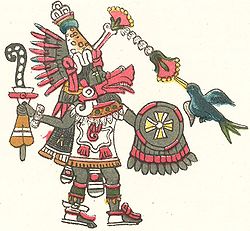Fingerprints of the Gods
From Wikipedia, the free encyclopedia
| Fingerprints of the Gods | |
|---|---|
| Author(s) | Graham Hancock |
| Language | English |
| Subject(s) | Alternative archaeology |
| Genre(s) | Non-fiction |
| Publication date | 1995 |
Fingerprints of the Gods: The Evidence of Earth's Lost Civilization is a book first published in 1995 by Graham Hancock, in which he echoes 19th century writer Ignatius Donnelly, author of Atlantis: The Antediluvian World (1882), in contending that some previously enigmatic ancient but highly advanced civilization had existed in prehistory, one which served as the common progenitor civilization to all subsequent known ancient historical ones. Supposedly, sometime around the end of the last Ice Age this civilization ended in cataclysm,[1] but passed on to its inheritors profound knowledge of such things as astronomy, architecture, and mathematics. Most of his claims are based on the idea that mainstream interpretations of archaeological evidence are flawed or incomplete. His work has been described by the scholarly community as pseudoscience andpseudoarchaeology.
Contents[hide] |
[edit]Thesis
The book pivots on "fingerprints" of these civilizations, evidence of which Hancock finds in the descriptions of Godmen like Osiris, Thoth,Quetzalcoatl, and Viracocha. These creation myths predate history, and Hancock suggests that in 10,450 BC, a major pole shift took place, before which Antarctica was further from the South Pole than it is today, and after which it was moved to its present location. This civilization was supposedly centered around Antarctica, and later survivors initiated the Olmec, Aztec, Maya and Egyptian cultures.
The book was influenced by Rose and Rand Flem-Ath's When the Sky Fell: in Search of Atlantis (1995/2009) in which they expand the evidence for Charles Hapgood's theory of earth crust displacement and propose Antarctica as the site of Atlantis.
The pole shift hypothesis hinges on Charles Hapgood's theory of Earth Crustal Displacement.[2] Hapgood was also fascinated with the story ofAtlantis and suggested that crustal displacement may have caused its destruction. His theories have few supporters in the geological community compared to the more widely accepted model of plate tectonics.
The title of the book seems to play off of Erich von Däniken's earlier book, Chariots of the Gods?, which examines much of the same archaeological, geological and historical evidence as Hancock whilst reaching a far different conclusion as to the origin and significance of such evidence.
[edit]Reception
Members of the scholarly and scientific community have described the proposals put forward in the book as pseudoscience and pseudoarchaeology.[3][4]
Fingerprints of the Gods has been translated into 27 languages and is estimated to have sold more than three million copies around the world.[5]
A second edition of the book was published in 2001, entitled Fingerprint of the Gods: The Quest Continues. It includes a new introduction and new appendices in which Hancock responds to some of his critics.
[edit]Influence
In 2009, Roland Emmerich, the Hollywood director, released his blockbuster disaster movie 2012 citing Fingerprints of the Gods in the credits as inspiration for the film.[6] In a November 2009 interview with the London magazine Time Out, Emmerich states: "I always wanted to do a biblical flood movie, but I never felt I had the hook. I first read about the Earth's Crust Displacement Theory in Graham Hancock's Fingerprints of the Gods."[7]
In the extras of the Blu-ray 10,000 BC, the director Emmerich and his co-writer Harald Kloser said that they had found inspiration in the same book.[8

No comments:
Post a Comment